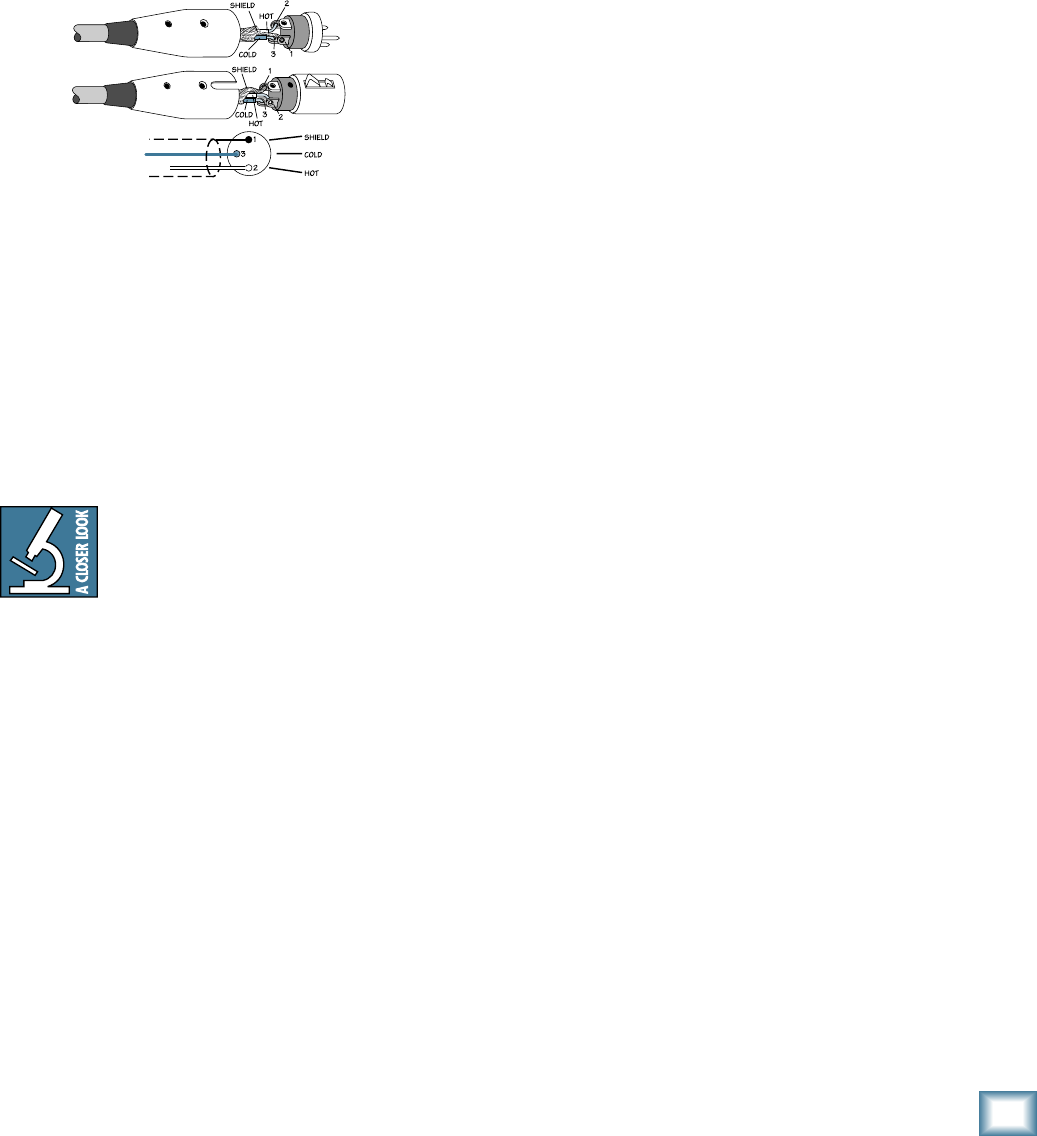
Appendix B: Connections
“XLR” Connectors
The HD1521 has one female XLR input that accepts
a balanced line-level signal. When connecting a balanced
signal, be sure it’s wired per AES (Audio Engineering
Society) standards:
XLR
Hot (+) Pin 2
Cold (–)Pin 3
Shield (Ground) Pin 1
There is also a male XLR connector on the HD1521
labeled loop out. This is also wired according to the AES
standards listed above.
The loop out connector allows you to connect several
HD1521’s. Simply plug the signal source (i.e., mixer
output) into the input jack, and patch that speaker’s
loop out jack to the next speaker’s input jack, and so on,
daisy-chaining multiple speakers. See page 4 for a visual
example of daisy-chaining.
There is a limit to how many you can
daisy-chain together. A general rule is to
maintain a load impedance ten times or
more than the source impedance to prevent
excessive loading on the source. For exam-
ple, if your mixer has an output impedance of 120 ohms,
then you can daisy chain up to nine HD1521s. This is
a load of 1222 ohms (HD1521 input impedance=11
kohms; 9 of these in parallel=1222 ohms). Since micro-
phones typically have a higher output impedance, you
should limit daisy-chaining from a mic source to two
HD1521s.
The loop out jack is wired straight from the main
input connector — there is no electronic circuitry
between — so the signal coming out of the loop out jack
is exactly the same as the signal going in.
Balanced XLR Connectors
11
Owner’s Manual
Owner’s Manual


















